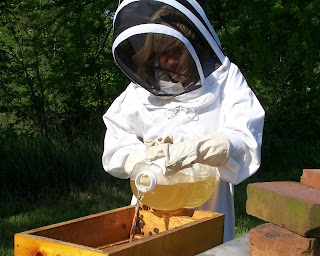The past four years, marked by heavy colony losses, have been costly to beekeepers. News stories have made this a time of expanding awareness among much of the public of the dwindling number of honey bees and the importance of honey bees and other pollinators in producing our food. Hopefully, the next five years will bring about a greater understanding of the conditions affecting honey bee health. Beekeepers will continue to study honey bee biology and try to learn more about the pests and pathogens that attack bees. Concerted efforts will be made to improve plant diversity on farms and public lands. Farmers will modify their tillage and planting practices to provide food and habitat for bees and native pollinators. Beekeepers will fight to resist the importation of bees from foreign countries to lessen the possibility of spreading pests and diseases. Queen bees may be carefully imported to expand genetic diversity. Hopefully, we will learn how to solve beekeeping and environmental problems with lesser use of chemicals. Colony Collapse Disorder will become another controllable condition of the bee yard.
Already, we are seeing an increase in the number of people putting a couple of bee hives in the back yard. They bring ideas and enthusiasm. They attend beekeeping association meetings and learn how bees are affected by humans and how we alter the environment. The hives of these new beekeepers also serve the existing bee colonies by supplying diverse drones to mate with queens. Most new beekeepers in North America build traditional Langstroth bee hives, but many explore other styles. Two writers offer views of bee hives developed in other countries and in earlier days: Buck White’s Bee Hive Journal, http://beehivejournal.blogspot.com/, offers design drawings for numerous bee hives and equipment. Amy Leigh shows bee hives from around the world at http://benefitsofhoneyblog.com/beekeeping-innovations/. She describes Langstroth, National, and Egyptian hives as well as skeps, bee gums, and hollow log hives. Erin Underhill, age seven, feeds a queen mating nucleus hive.
--Richard





This comment has been removed by a blog administrator.
ReplyDeleteWe have been gardening for wildlife in Stayton OR for several years and were concerned that there seemed to be few honeybees in our yard. A friend began keeping bees and encouraged us to start our own hive. So, April of 2012 we got our first package. That hive swarmed in june and we started a second hive with that swarm. So far, so good! We are enjoying the experience and the connection to other beekeepers in our local beekeeper association. We are also keeping mason bee colonies and finding many wild bees and other wild pollinators. It is a great learning experience and a chance to educate the neighborhood kids who were fascinated to watch our last swarm.
ReplyDeleteMargie
Congratulations, Margie, on your efforts to provide habitat, bees, and an educational example to your area.
ReplyDelete--Richard